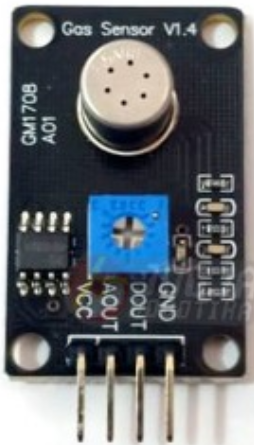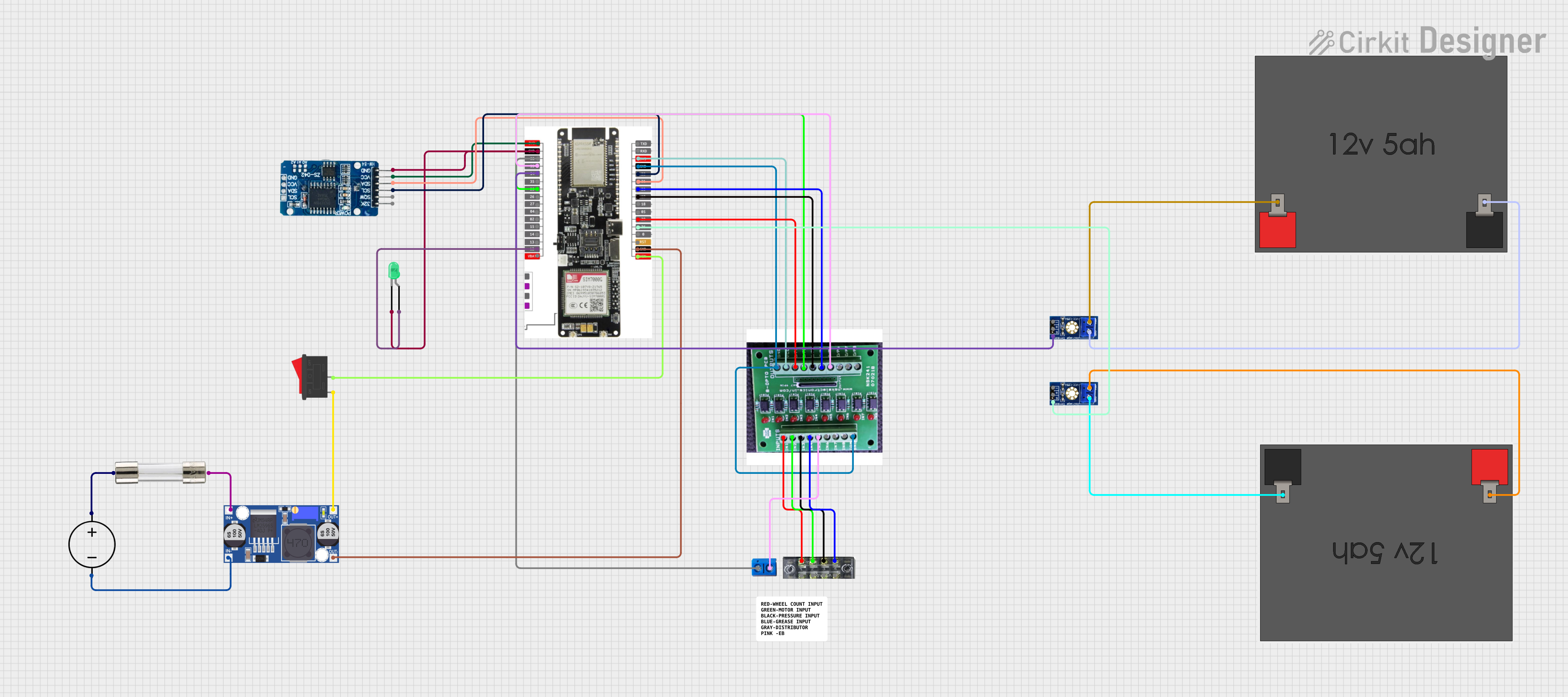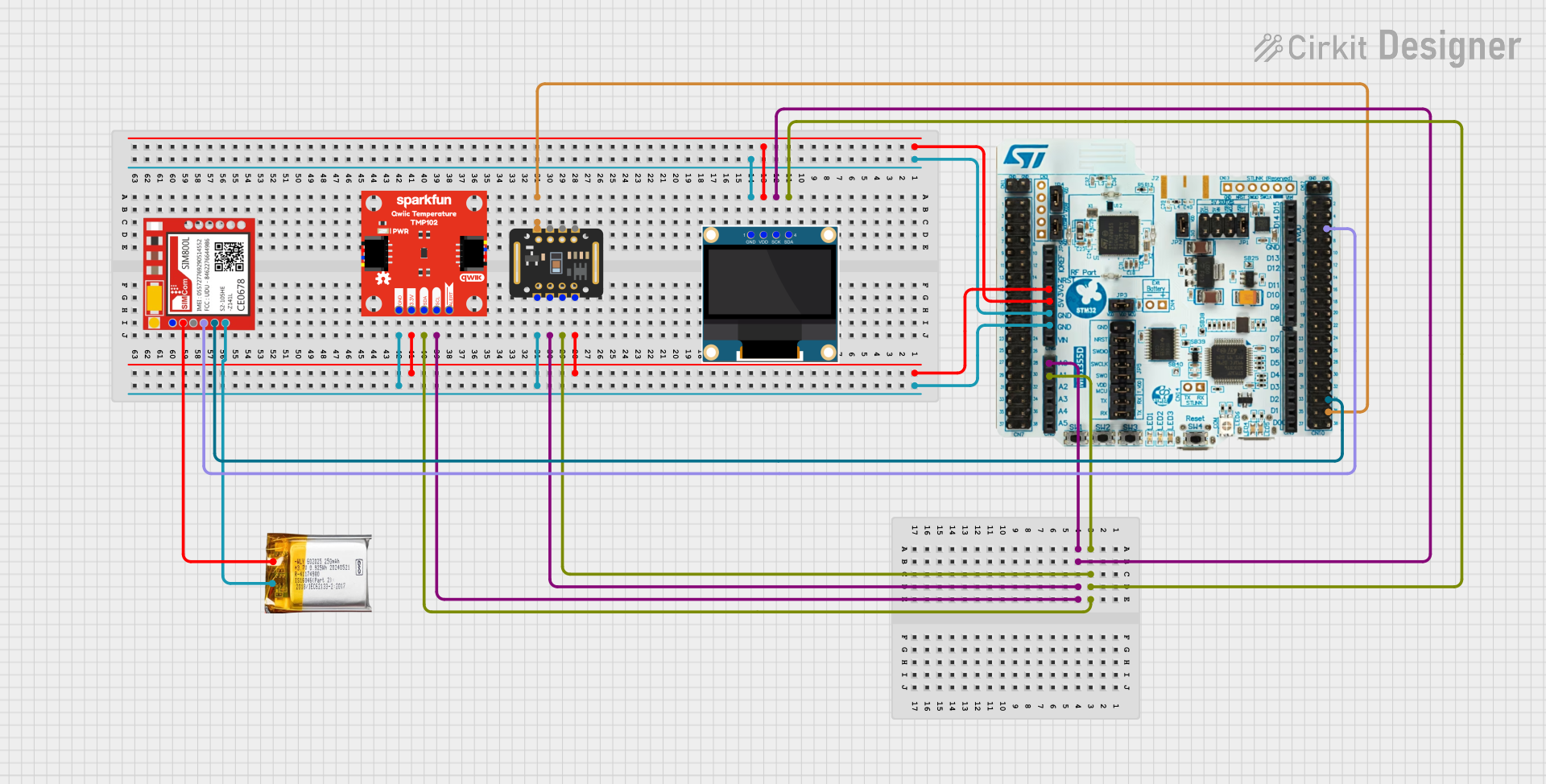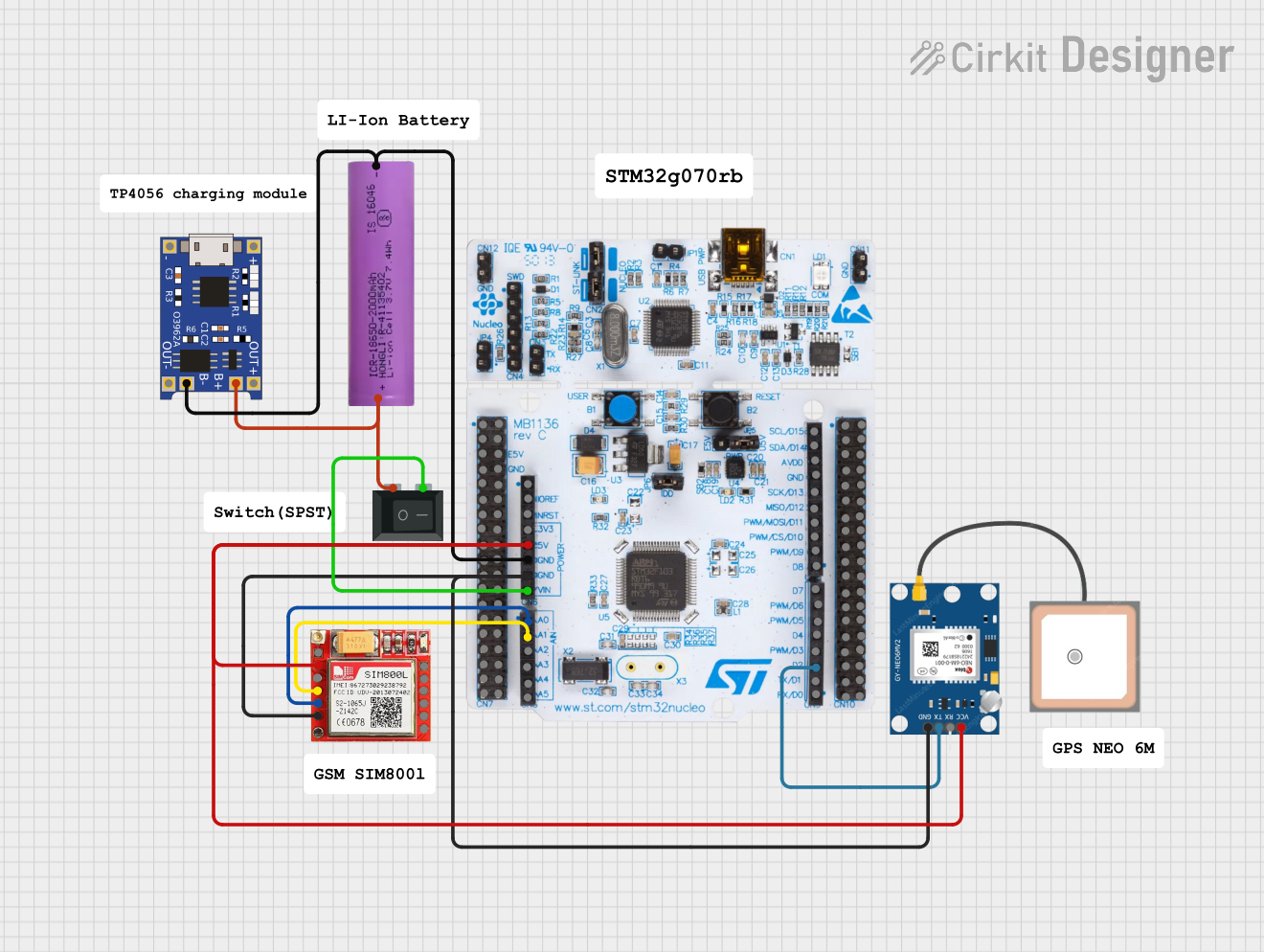
How to Use TGS-2602: Examples, Pinouts, and Specs

 Design with TGS-2602 in Cirkit Designer
Design with TGS-2602 in Cirkit DesignerIntroduction
The TGS-2602, manufactured by FIGARO, is a compact and reliable gas sensor designed to detect a variety of gases, including methane, propane, and other combustible gases. It operates on the principle of resistive change when exposed to target gases, providing a simple yet effective method for gas detection. This sensor is widely used in safety systems, environmental monitoring, and air quality control applications.
Explore Projects Built with TGS-2602

 Open Project in Cirkit Designer
Open Project in Cirkit Designer
 Open Project in Cirkit Designer
Open Project in Cirkit Designer
 Open Project in Cirkit Designer
Open Project in Cirkit Designer
 Open Project in Cirkit Designer
Open Project in Cirkit DesignerExplore Projects Built with TGS-2602

 Open Project in Cirkit Designer
Open Project in Cirkit Designer
 Open Project in Cirkit Designer
Open Project in Cirkit Designer
 Open Project in Cirkit Designer
Open Project in Cirkit Designer
 Open Project in Cirkit Designer
Open Project in Cirkit DesignerCommon Applications
- Indoor air quality monitoring
- Gas leak detection in residential and industrial settings
- Environmental monitoring systems
- Smart home safety devices
- HVAC systems for air quality control
Technical Specifications
The TGS-2602 is designed to provide high sensitivity to target gases while maintaining low power consumption. Below are the key technical details:
Key Specifications
| Parameter | Value |
|---|---|
| Target Gases | Methane, propane, and other combustible gases |
| Operating Voltage (Vc) | 5.0 V ± 0.2 V |
| Heater Voltage (Vh) | 5.0 V ± 0.2 V |
| Power Consumption | ~210 mW |
| Sensing Resistance (Rs) | 10 kΩ to 100 kΩ (in clean air) |
| Operating Temperature | -10°C to +50°C |
| Humidity Range | 30% to 95% RH (non-condensing) |
| Dimensions | 9.2 mm (diameter) × 7.8 mm (height) |
| Weight | ~0.5 g |
Pin Configuration
The TGS-2602 has a simple pin layout, as shown below:
| Pin Number | Pin Name | Description |
|---|---|---|
| 1 | Heater (H1) | Heater terminal 1 for powering the sensor's heater |
| 2 | Sensor (A) | Sensing element terminal A |
| 3 | Sensor (B) | Sensing element terminal B |
| 4 | Heater (H2) | Heater terminal 2 for powering the sensor's heater |
Note: Pins H1 and H2 are used to power the internal heater, while pins A and B are used to measure the sensor's resistance.
Usage Instructions
How to Use the TGS-2602 in a Circuit
Powering the Sensor:
- Connect the heater terminals (H1 and H2) to a stable 5V DC power supply. Ensure the voltage does not exceed the specified range to avoid damaging the sensor.
- Use a current-limiting resistor if necessary to control the power supplied to the heater.
Measuring Gas Concentration:
- Connect the sensing terminals (A and B) to a voltage divider circuit. Typically, a load resistor (RL) is connected in series with the sensor to measure the voltage drop across it.
- The sensor's resistance (Rs) changes in the presence of target gases. This change can be measured and correlated to gas concentration using a calibration curve provided in the sensor's datasheet.
Interfacing with a Microcontroller:
- The output voltage from the voltage divider can be read using an analog input pin of a microcontroller, such as an Arduino UNO.
- Use the analog-to-digital converter (ADC) of the microcontroller to process the sensor's output and calculate gas concentration.
Important Considerations
- Preheating: Allow the sensor to preheat for at least 24 hours before initial use to stabilize its performance.
- Calibration: Perform calibration in a controlled environment to ensure accurate gas concentration readings.
- Environmental Factors: Avoid exposing the sensor to high humidity, condensation, or corrosive gases, as these can affect its performance.
- Placement: Install the sensor in a location where it can effectively detect target gases without interference from other environmental factors.
Example Code for Arduino UNO
Below is an example code snippet for interfacing the TGS-2602 with an Arduino UNO:
// TGS-2602 Gas Sensor Example Code for Arduino UNO
// This code reads the sensor's output voltage and calculates the resistance (Rs).
const int sensorPin = A0; // Analog pin connected to the sensor's output
const float RL = 10.0; // Load resistor value in kΩ
void setup() {
Serial.begin(9600); // Initialize serial communication
Serial.println("TGS-2602 Gas Sensor Test");
}
void loop() {
int sensorValue = analogRead(sensorPin); // Read analog value (0-1023)
float voltage = (sensorValue / 1023.0) * 5.0; // Convert to voltage (0-5V)
// Calculate sensor resistance (Rs)
float Rs = (5.0 - voltage) / (voltage / RL);
// Print the results
Serial.print("Sensor Voltage: ");
Serial.print(voltage);
Serial.println(" V");
Serial.print("Sensor Resistance (Rs): ");
Serial.print(Rs);
Serial.println(" kΩ");
delay(1000); // Wait for 1 second before the next reading
}
Note: Replace the RL value in the code with the actual load resistor value used in your circuit.
Troubleshooting and FAQs
Common Issues and Solutions
No Output or Incorrect Readings:
- Cause: Improper wiring or loose connections.
- Solution: Double-check all connections and ensure the sensor is powered correctly.
Unstable Readings:
- Cause: Insufficient preheating time or environmental interference.
- Solution: Allow the sensor to preheat for at least 24 hours and ensure it is placed in a stable environment.
Sensor Not Responding to Gases:
- Cause: Sensor may be damaged or exposed to extreme conditions.
- Solution: Verify the operating conditions and replace the sensor if necessary.
High Power Consumption:
- Cause: Incorrect heater voltage or excessive current draw.
- Solution: Use a regulated power supply and ensure the heater voltage is within the specified range.
FAQs
Q1: Can the TGS-2602 detect gases other than methane and propane?
Yes, the TGS-2602 can detect a variety of combustible gases. However, its sensitivity and accuracy may vary depending on the gas type.
Q2: How often should the sensor be calibrated?
Calibration frequency depends on the application and environmental conditions. For critical applications, periodic calibration is recommended.
Q3: Can the sensor be used outdoors?
The TGS-2602 is designed for indoor use. If used outdoors, ensure it is protected from moisture, dust, and extreme temperatures.
Q4: What is the expected lifespan of the TGS-2602?
The sensor typically has a lifespan of 5 years under normal operating conditions.